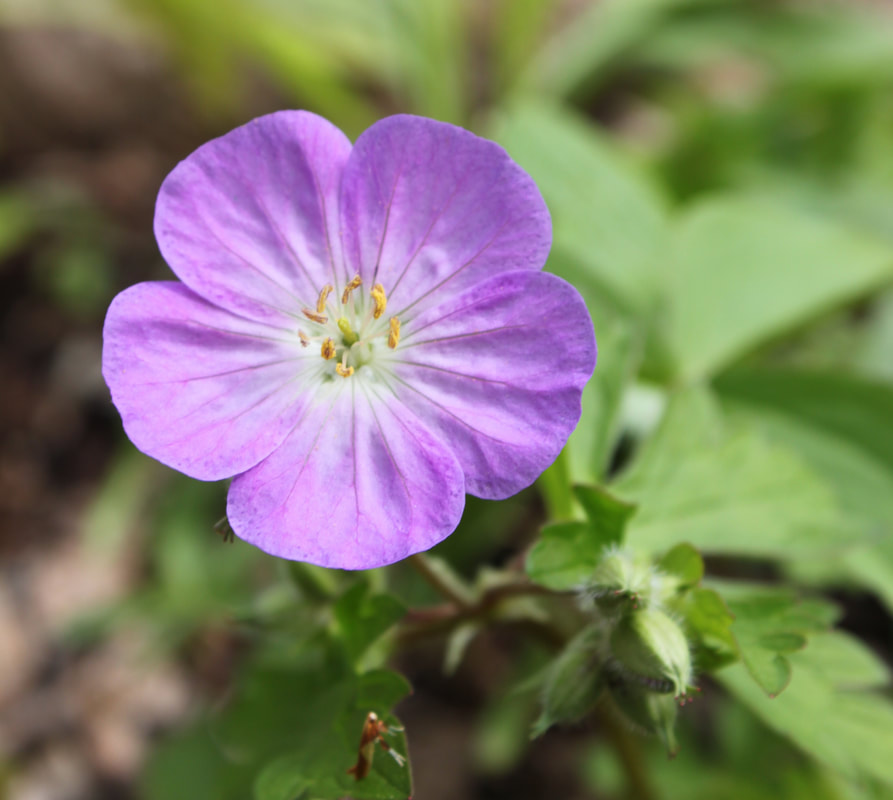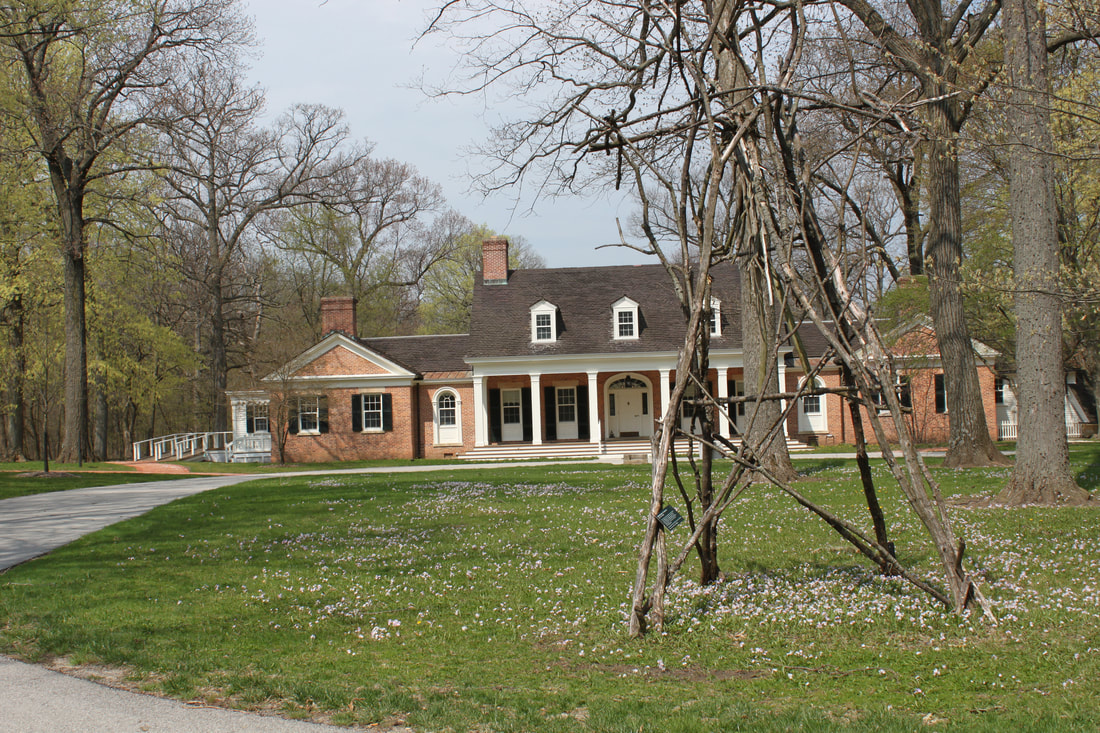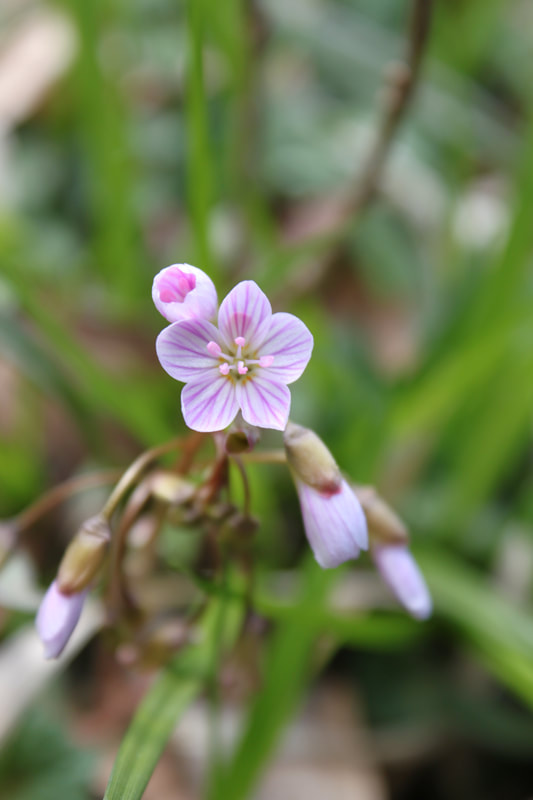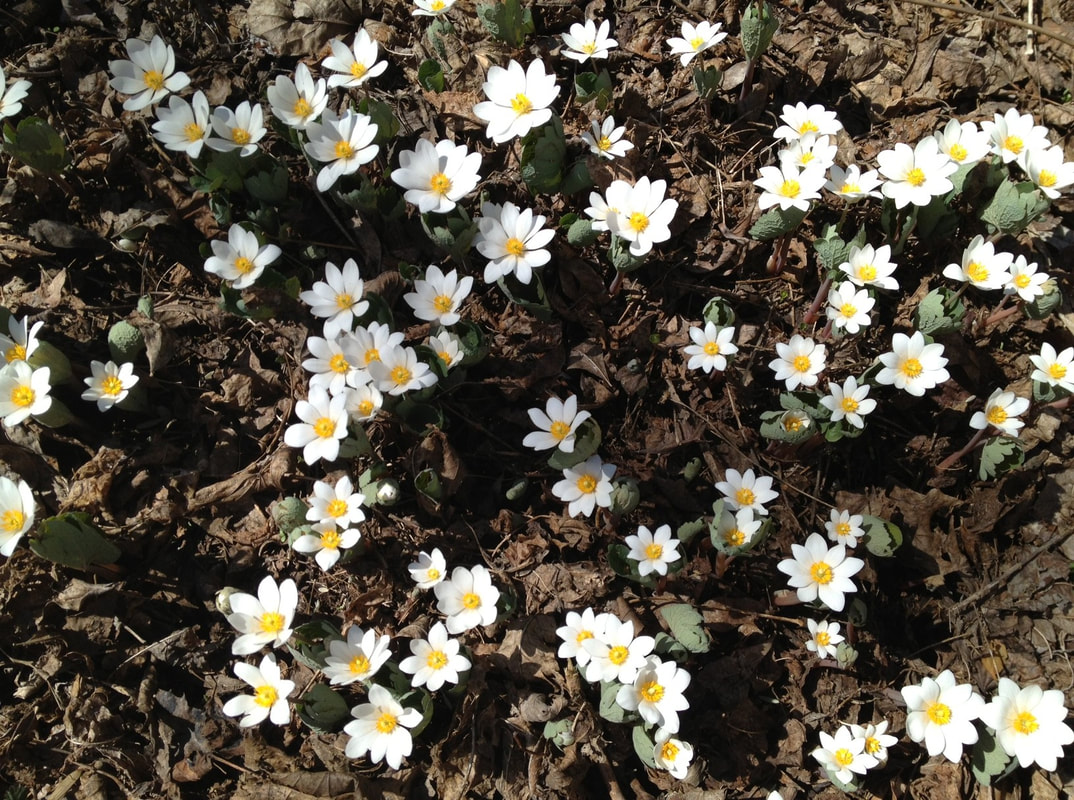|
NATURE SEMINARLEARN SPRING WILDFLOWERS . . . ALL THEMERRY MONTH OF MAY Tuesdays, May 6-27, 6:00 - 8:00 p.m.
Join Glenn Adelson, chair of the Environmental Studies Program at Lake Forest College, for this nature seminar that focuses on learning all about our spring wildflowers. We’ll learn plant biology, as we walk the woods searching for trout lily, trillium, hepatica, wood anemone, marsh marigold, spring beauty, wild geranium and more. We’ll also explore the relationship between plants and their environments. Four sessions. Dress appropriately for walking in the preserve. WHEN: Tuesdays (May 6, 13, 20 & 27), 6:00 - 8:00 p.m.
0 Comments
Although it may seem that winter will never let go of its tight grip, the forests and fields of Lake County are about to bloom with force. Spring is here despite the dusting of snow and below freezing nights. Over the next month, many wildflowers will poke out of the leaf litter and continue their cycle of life. Many of these flowers have very short adult lives, often only living for a brief amount of time. These spring ephemerals are an exciting part of our local ecology, but we are not the first generation to take note of their beauty and usefulness. Native american tribes, as well as the first European settlers, used the flowers both medicinally and spiritually. Although you may recognize the spring beauty or bleeding heart, there is a storied past behind each spring flower.
Perhaps one of the most commonly seen spring flowers is the dandelion (Taraxacum officinale). It is a weed, growing in backyards, along roads and everywhere in between. The flower is actually made of hundreds of florets, each being pollinated during the dandelion’s life. The dandelion has a fascinating history and has been associated with humans as early as 300 BC. Both the Europeans as well as many American Indian tribes, including the Potawatomi and Ojibwa, have used the dandelion for myriad medicinal purposes. The leaves of the plant have diuretic properties and can be used in salads or tea. Native Americans used the plant in order to help ailments such as kidney disease and swelling. Today, specialty winery’s still make dandelion wine from the flowers.
Because the plant secretes this red liquid, it was thought that it could cure blood related illness. The reddish liquid that comes out of the plant, in fact, had many uses by both settlers and Indians. Due to its strong color, it was used for dyes, both in painting one’s body as well as for coloring baskets and decoration. Bloodroot also has many medicinal properties. It was used to stop bleeding, treat the symptoms of fever and cure a sore throat. The Winnebago tribe used Bloodroot as a digestive aid and a way to sooth a toothache. These are just some of the early spring flowers that will be showing up at Ryerson Woods and other local woodlands. Please remember that you cannot extract anything from the woods, so just enjoy the intrinsic beauty of the flowers. Stay tuned for parts 2 and 3, which will feature flowers during the later portion of the bloom. Spring is here, go enjoy it! This blog post was written by Luke Buckardt, who assists Brushwood Center with social media. Luke graduated from Northland College in 2012 with a degree in biology. He grew up in Riverwoods and has roamed Ryerson Woods since he was young, knowing the preserve intimately.
Sophie Twichell was kind enough to invite me to submit a blog post for Brushwood Center, and to share, in anticipation of Earth Day, some thoughts on Environmental Literature. Even though this means tearing myself away from Colm Toibin’s The Testament of Mary, a book I find extraordinarily compelling, I am more than happy to do so. Yesterday, in the company of a room full of students who were polite enough to act interested, I indulged myself in a medium-long digression on the environmental writing of John McPhee, whose The Founding Fish (2002) veterans of Ryerson Reads will remember as a natural and cultural history of the American Shad. McPhee, I wanted my students to understand, is the environmentally-inclined member of a group of writers remembered now as Sixties New Journalists. These writers, in response among other things to the Vietnam-era distrust of government and media, produced non-fiction prose that abandoned traditional journalistic objectivity, in favor of a subjective, sometimes novelistic reportage in which strict fidelity to fact was abandoned. In his Encounters with the Archdruid (1971), for example, McPhee joins David Brower, then president of the Sierra Club, and Floyd Dominy, then Comissioner of the U.S. Bureau of Reclamation, in a rubber raft on the Colorado River not long after the completion of the controversial Glen Canyon Dam. The dialogue McPhee reports between the conservationist and the dam builder was certainly invented or adapted (the three of them were in the middle of a deafening rapids after all) but nicely dramatizes the clash of two opposing philosophies about the natural word. Elsewhere, as in his The Control of Nature (1989) and Annals of the Former Word (1998), a collection of his writings on geology, McPhee writes with a more traditional objectivity. My favorite of his books, and the one I am most interested in re-reading is The Pine Barrens (1968), a survey of the landscape, ecology, history and folkways of the New Jersey Pine Barrens, a wilderness of more than a million acres in one of the most populated corners of the nation. McPhee writes: The Pine Barrens are so close to New York that on a very clear night a bright light in the pines would be visible from the Empire State Building. A line ruled on a map from Boston to Richmond goes straight through the Pine Barrens. The halfway point between Boston and Richmond -- the geographical epicenter of the developing megalopolis -- -- is in the northern part of the woods, about twenty miles from Bear Swamp Hill. Another book on my mind right now is an anthology of very current environmental poetry edited, with G.C. Waldrep, by my wonderful colleague in Lake Forest College’s English Department, Joshua Corey. The Arcadia Project: North American Postmodern Pastoral (2012) is a collection of challenging poems that repurpose the ancient mode of pastoral writing for a moment when not only is the environment in crisis, but when, to the artistic and philosophical imagination, the line between the natural and the man-made has been decisively breached. Corey writes: Postmodern pastoral retains certain allegiances to the lyric and individual subjectivity while insisting on the reality of a world whose objects are all equally natural and therefore equally unnatural. Celebrity websites and abandoned factories and telenovelas and the New Jersey Turnpike are all eligible objects of postmodern pastoral’s dialectical nostalgia, sites in which the human and the unhuman mix and collide, as much as in any mountain peak or jungle or wetland. To learn more about the book, visit: http://arcadiaproject.net One of the environmental titles that I am looking forward to reading in the near future we will take up as a group next year at Ryerson Reads. Robert Pogue Harrison, a scholar of Italian literature at Stanford, was first known to me for his powerful work of environmental history, Forests: The Shadow of Civilization (1992). In his new book, Gardens: An Essay on the Human Condition (2008) Harrison offers, as I understand it, not a survey of garden history, but a series of philosophical reflections on what gardens – from Eden to Versailles – reveal about being human both today, in the shadow of environmental collapse, and throughout the long history in which our species has sought beauty, calm, even enlightenment from the artistic manipulation of natural materials. Let me close by offering Brushwood Center’s readers a small specimen of my own writing – a poem on an environmental theme that is set in a landscape Brushwood regulars will find familiar. The Vegetation of Wisconsin August corn grows right to the doors of the Adult Superstore. Burdock and Mullein live among the Ho Chunk burial mounds. At the Aviation Museum in Oshkosh, where they keep a shrine to the Doolittle raids, Loosestrife and Chicory blaze by the parking lot. A well-kept lawn covers the landfill. At its base, and at a little distance, they fly the flag. From the Hamilton Stone Review, Issue #30, Winter-Spring 2014.(http://www.hamiltonstone.org/hsr30.html#poetry). Prof. Ben Goluboff leads the Ryerson Reads book discussions (four per year) for Brushwood Center at Ryerson Woods.Ben Goluboff is a professor of English at Lake Forest College. He has led vibrant discussions for our RYERSON READS book group for 10 wonderful years. Here are the selections for the 2014-2015 season. Hope you'll join us!
Sept. 10, 2014: When the Killings Done by T.C. Boyle Nov. 12, 2014: The Paradise of Bombs by Scott Russell Sanders Jan. 14, 2015: The Last Animal by Abby Geni Mar. 11, 2015: Gardens: An Essay on the Human Condition by Robert Pogue Harrison |
AuthorThis blog is written by the staff and partners of Brushwood Center at Ryerson Woods Archives
February 2022
Categories |
|
21850 N. Riverwoods Rd.
Riverwoods, IL 60015 224.633.2424 [email protected] ABOUT BRUSHWOOD BECOME A PARTNER VOLUNTEER AND JOB OPPORTUNITIES |
Brushwood Center at Ryerson Woods is committed to enabling the participation and enjoyment of our programming and events for all visitors. At Brushwood Center, you will have open access to accessible parking and entrance to the house, a gender neutral bathroom, and changing tables.
If you require certain accommodations in order to observe or attend our events, or have questions regarding accessibility of our facilities, please contact our Director of Public Programs and Music, Parker Nelson, at [email protected] or at (224) 633-2424 ext. 1. Programming and events at Brushwood Center are available to everyone, including but not limited to age, disability, gender, marital status, national origin, race, religion, and sexual orientation. Site Photography by: In Life Photography, Michael Kardas Photography, Ewa Pasek Photography, Brushwood Staff, and Josiah Shaw Productions |
OPEN TO THE PUBLIC Monday - Thursday & Saturday: 10am - 3pm Sunday: 1pm - 3pm and by appointment |




 RSS Feed
RSS Feed
